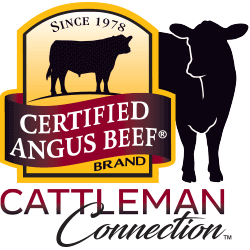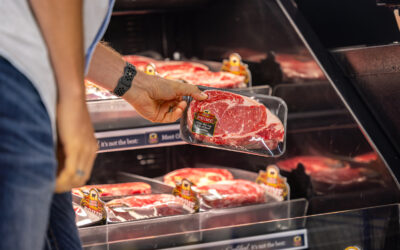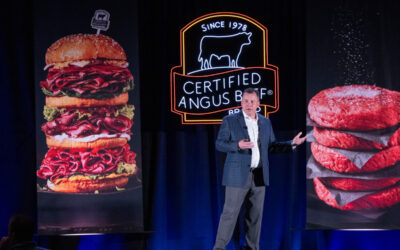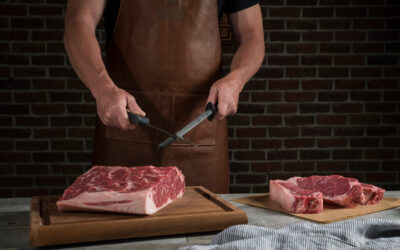
CAB Connection
Producing for the brand
by Miranda Reiman
June 8, 2021
“Do we just sign up? Or get special ear tags?”
Those are questions we hear quite often from producers who want to raise cattle for the Certified Angus Beef ® (CAB®) brand. Some days I wish the answer were “yes.”
On one hand, it’s not that simple. On the other, it’s even simpler.
How do I certify my herd?
You don’t. In fact, neither our company nor its licensed packers certify cattle or carcasses. Instead, third-party USDA graders apply the CAB logo to each carcass that meets our specifications. First, the animal must pass the live evaluation as Angus type. (That’s a predominantly solid black hide from tail head to shoulder above the flank.) Then it must meet our 10 carcass specifications (see box). For those that do, the CAB trademark leverages marketing opportunities and increases profitability for licensed packers, distributors, restaurants and grocery stores that market the beef. This adds value to those cattle, typically paid to producers in the form of grid premiums.
By working to improve the carcass quality of your Angus and Angus-cross cattle, you can become a part of the program. It is a long-term process with no such thing as signing up. There are no commitments other than the ones you make because of market forces.
How do I get my cattle to qualify for the brand?
There are no guarantees, but you can improve the odds of raising more qualifiers through a combination of genetics and management.
Since cattle can’t be better than their genetics allow, selection is an important first step.
Lack of marbling is the top reason carcasses are kicked out of the brand—only 35% of all Angus-type cattle make the cut. Out of the pool of eligible cattle, 92% of those falling short miss that premium opportunity because they don’t meet the marbling threshold of Modest or higher. We don’t advocate single-trait selection, but we do talk about marbling a lot because it’s the No. 1 spot where producers leave money on the table and easily included among balanced traits. Marbling matters.
The next three specifications where genetic selection may have the most impact are the 10- to 16-square-inch ribeye, hot carcass weight no greater than 1,050 pounds, and back fat thickness of one inch or less.
No amount of management can overcome poor genetics, but superior genetics can easily be minimized through poor management. Paying attention to all the little things along the way means using the best health, nutrition and animal handling practices, and then coordinating those with whoever finishes your calves.
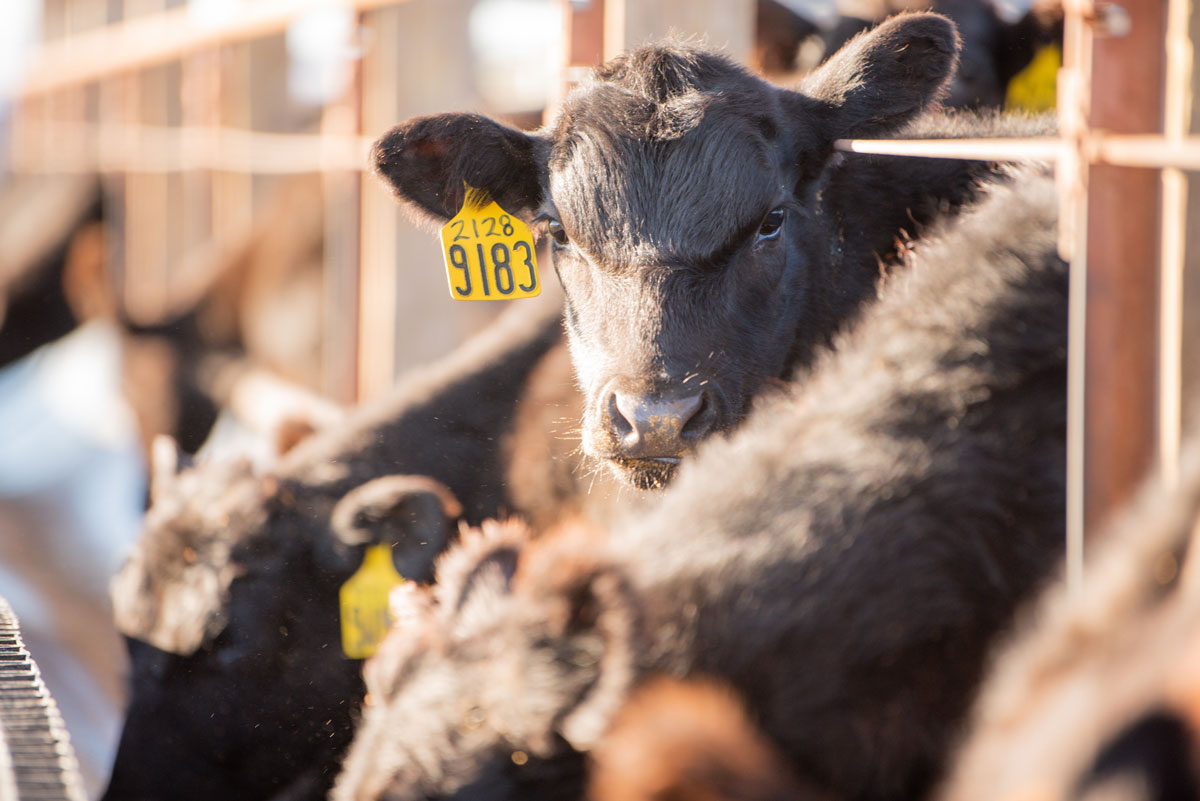
How does CAB fit into my bottom line?
It can be hard to explain. How does a company that owns no cattle, no beef, no retail outlets or restaurants, no packing plants or processors add value in the beef business?
Of the 75 different USDA-certified Angus brands, CAB is the only one owned and operated by the American Angus Association®. Our company, Certified Angus Beef LLC, is a not-for-profit arm of the Association, taking no dollars from registration fees, transfers or membership. The brand is entirely funded by licensed packers and processors, which pay commissions of about 2 cents per pound for every CAB product sold. When a carcass is certified, the packer can choose to market it as Certified Angus Beef ®–and most of the time, they do. Why? They can sell it for more money, because the distributors know they can sell it for more money, because the restaurants and retailers know a consistent eating experience has inherently more value to their customers.
That pull-through demand has funded the brand for more than four decades, and puts more than $92 million in grid premiums into cattlemen’s pockets each year. Anyone who retains ownership at the time of finishing and sells to a CAB-licensed packing plant (with access to 85% of North American fed cattle) has an opportunity to see those dollars directly. Last year’s average CAB grid premium of approximately $50 per head does not include the related premiums for grade and yield.
For those who sell at weaning or soon after, communicating your calves’ carcass quality potential gives buyers more information to encourage higher bids. For example, the AngusLinkSM Genetic Merit Scorecard lets you denote groups with CAB’s Targeting the Brand™ logo when they have an above-average chance of qualifying for the brand (see page XX). Short of that, it can be as simple as a phone call to potential buyers, or even a social media post with information on the genetics and management behind the calves for sale.
Demand for high-quality beef is strong and steadily increasing for decades, so even though you can’t sign up, you can join the quality movement. And you can join our e-mail list to get the latest information on high-quality beef production delivered right to your inbox. Just visit cabcattle.com.
See, I told you it was simple.
Originally ran in the Angus Beef Bulletin.
You may also like
CAB Sets Sales Records, Sees Historically High Brand Acceptance Rates
In an otherwise tough time in the beef business, sales and supply records have been a bright spot. The positive numbers mean that quality beef production has not let up, and beef demand is holding. Consumers have proven the value proposition: the good stuff is worth a little more money, for a better eating experience.
Making Sense of Supply, Pricing and Navigating the Market
Amid anticipated shifts in cattle supply and evolving market dynamics, CAB remains well-positioned to navigate the beef sales road ahead. Clint Walenciak addressed how producer profitability, strategic specification adjustments, and resilient demand will help stabilize the brand’s beef supply chain through herd size and pricing shifts in 2025 and beyond.
Thriving with Shrinking Supply
Even as the nation’s cow herd contracts, “more pounds” and “higher quality” have been common themes. Specific to commercial cattlemen: It still pays to focus on carcass merit, in addition to other economically relevant traits.
